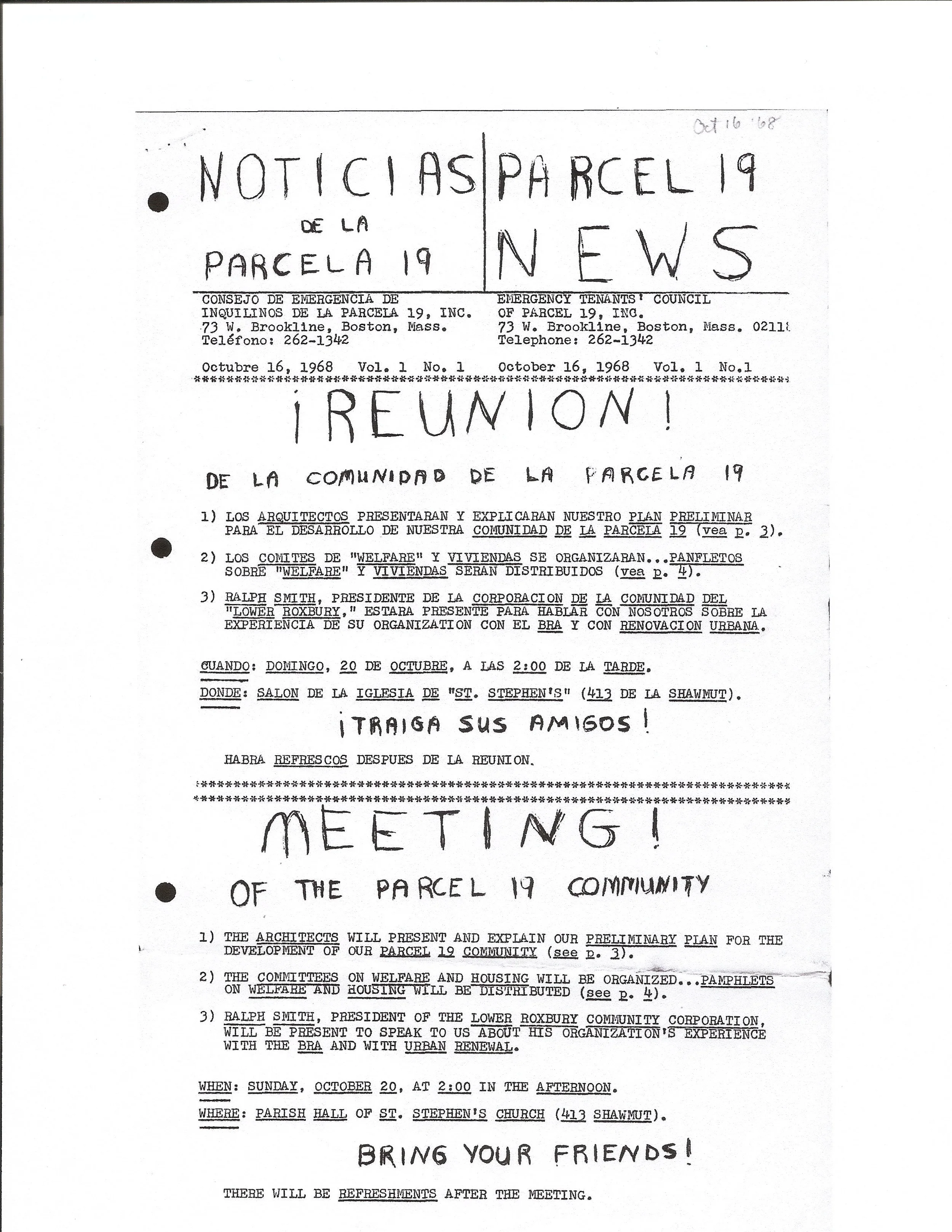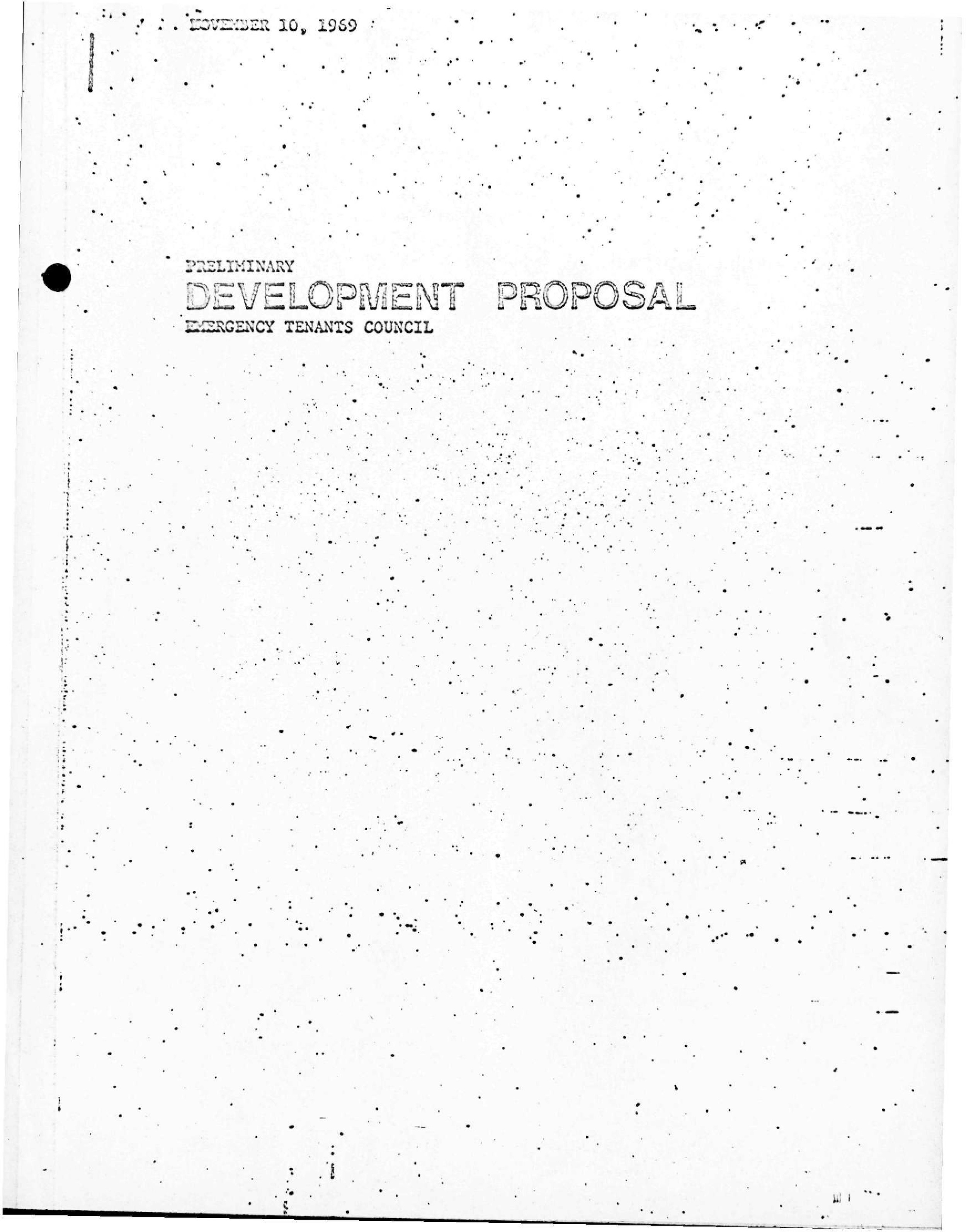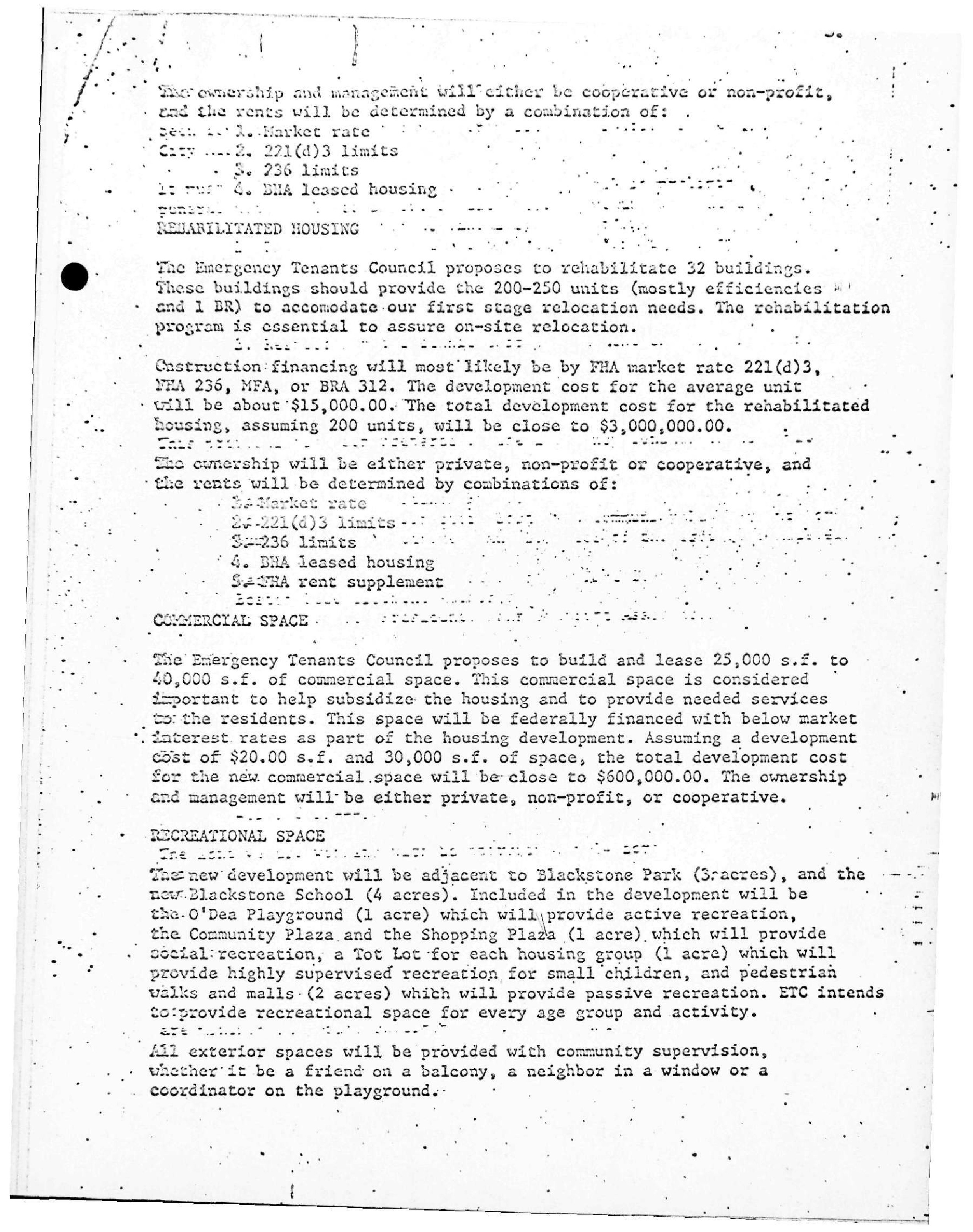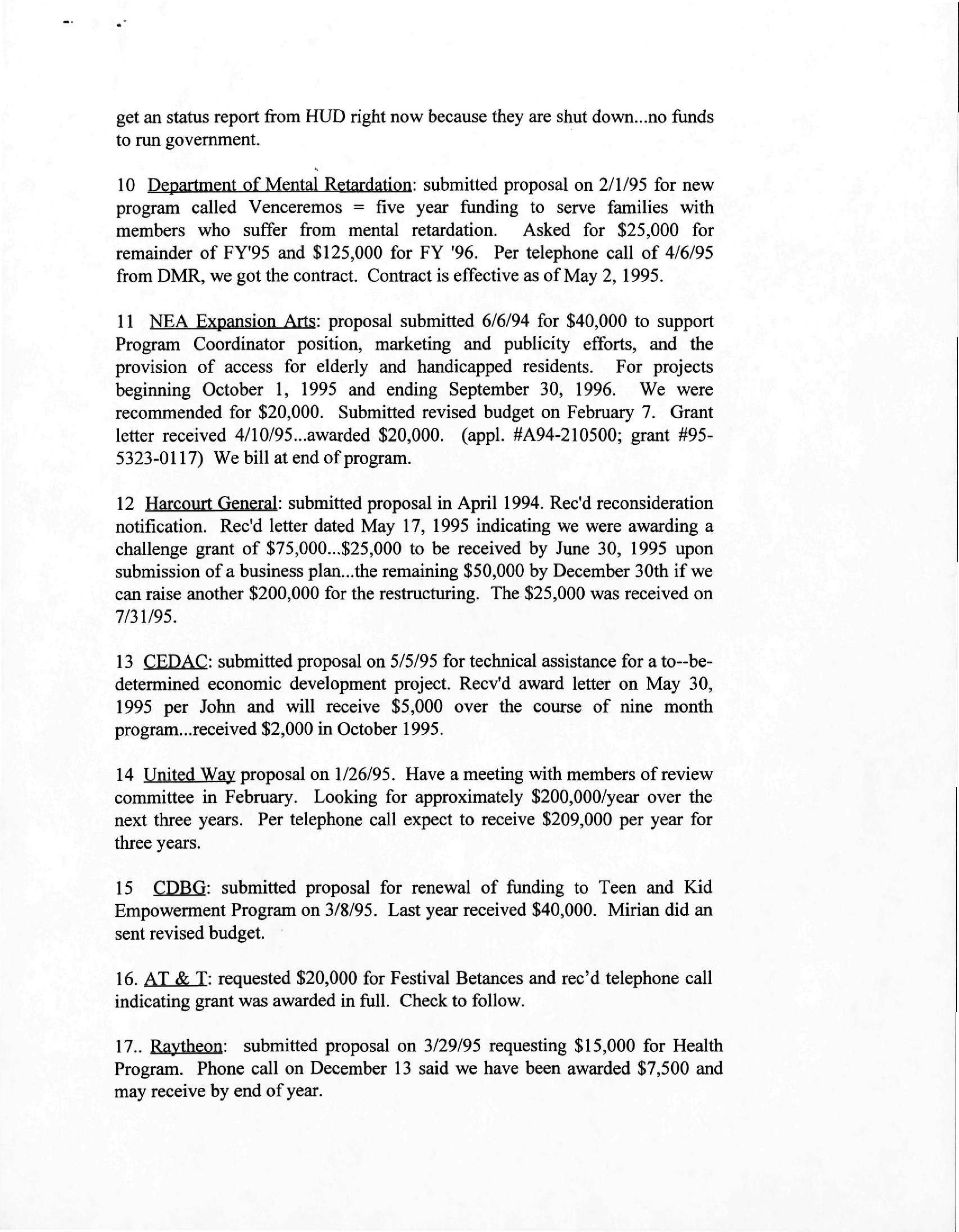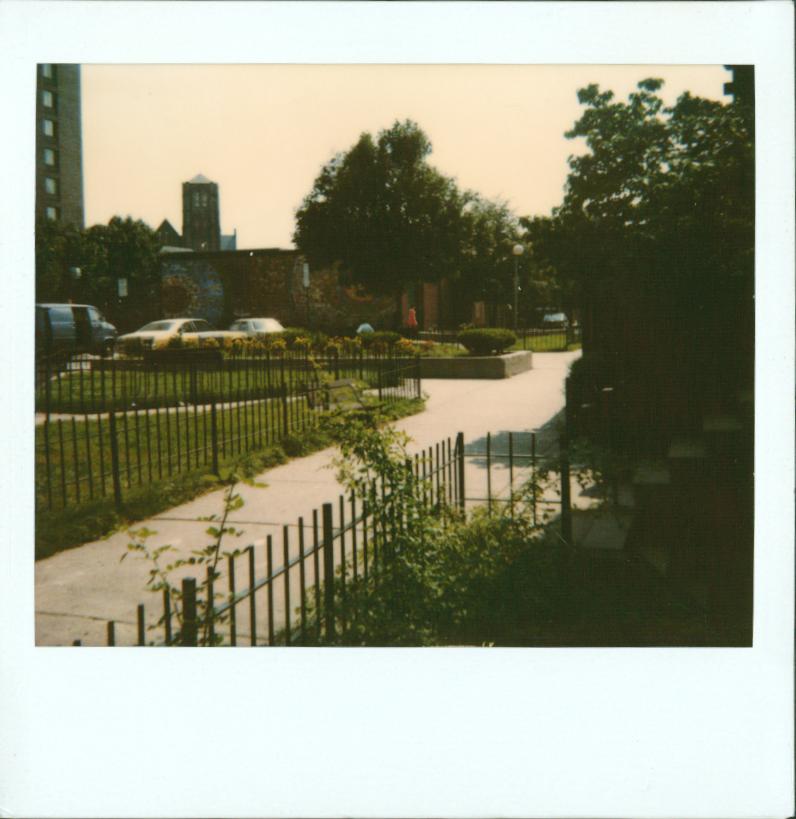The Villa Victoria Project proved to be a very interesting topic for our group, which consisted of Rocky, Michelle, and Lia. When we first started this project, we went to the archives to find material that answered the question, What kind of protesting did the people of Parcel 19 do to combat Urban Renewal? Having worked hard to come close to an answer to this question, we were unable to find a lot of information to make us feel accomplished in answering the question. So, as a group we felt very unhappy with this task. Until, we decided to watch the video of the establishment of Villa Victoria. When we saw the video we were made aware of how the fight for Villa Victoria did not consist of a lot of picketing and protesting, but actually the fight was based around organized planning.
One reason Villa Victoria is a unique place is because of the large amount of organization the people of Parcel 19 put into the development of Villa Victoria. The residents got their own architect and made a better plan than the BRA. The residents wrote letters to the BRA and people who could help them. They filled out the legal forms, and were able to raise around $100,000 to begin the reconstruction on Parcel 19. The community was fully devoted to having its demands met. And because of their serious attitude and organized way, the BRA approved of their plans, and they now have a beautiful place to call home, Villa Victoria.
Lia Garcia: 17 years old/Dorchester/Bunker Hill Community College
Special Thanks to: Ms. Romero and Ms.Giordana, the Archivists at Northeastern University
So this is our project about Villa Victoria.
Enjoy!!
Rocky Cotard: 17 years old/Mattapan/Boston Arts Academy
Michelle Zhang-15 years old/Brighton/Boston Latin School
TIMELINE
of important dates:
1965: Boston Redevelopment Authority (BRA) adopts the South End Urban Renewal Plan.
1968: Inquilinos Boricuas en Acción (IBA), a grassroots organization in the South End, is started by activists and residents. IBA incorporates under the name Emergency Tenants' Council of Parcel 19, Inc. (ETC). ETC establishes Human Services division.
1969: ETC is designated by the BRA as sponsor-developer of Parcel 19.
1974: Emergency Tenants' Council legally changes name to Inquilinos Boricaus en Acción (IBA). IBA becomes parent organization. ETC becomes the property management and security affiliate of IBA.Unity Tower elderly housing development is completed. IBA hosts first annual cultural festival, later named Festival Betances.
1976: Residents vote to change the name of Parcel 19 to Villa Victoria.Viviendas la Victoria housing development is completed.
1979: Betances Mural is completed.
NOTE:
Boston Redevelopment Authority (BRA): An organization, funded in part by the federal government, that was in charge of Urban Renewal in the South End.
-REFERENCE: Northeastern University website on the Chronology of the Inquilinos Boricuas en Acción (IBA): http://www.library.neu.edu/archives/collect/findaids/m111findbioghist.htm
For more information about the history of Villa Victoria...
http://www.iba-etc.org/about.html
The documents below display the newsletter that the IBA, or ETC, sent to the public to inform them of the meetings.
Lia: For me the best part was to know how that they do so good and they do not even do like a lot fight for the house was a good place for Puerto Ricans live and feel so good and they also do a good publication about how change was in Villa Victoria.
Inquilinos Boricuas en Accion Collection. (M111), University Libraries, Archives and Special Collections Department, Northeastern University, Boston, Massachusetts, Box 6, folder 27.
The documents below display the letter from the BRA director specifying how the city should give ETC the power to rebuild their community.
Michelle: These documents really speak to me because they represent the culmination of the fighting process for Villa Victoria. It shows the community's seriousness to the situation because of their preparation like educating the public with many meetings and their organization in planning their own type of "Urban Renewal." It also shows the people's dedication and bravery to take on the challenge of combating the Boston Redevelopment Authority and never giving up even if their chances seemed slim and there have not been many communities who approached Urban Renewal like they did.
Inquilinos Boricuas en Accion Collection. (M111), University Libraries, Archives and Special Collections Department, Northeastern University, Boston, Massachusetts, Box 48, folder 17.
The documents below specifies how the ETC raised money to complete their projects.
Rocky Cotard: This document is very important to our project. One reason is that it shows how much work that the people of the ETC put into the success of the neighborhood. I say this because the ETC (or IBA) even after having successfully gotten the opportunity to create their own living environment, they still had to raise a lot of money to get the work done. If you got to view the video, in the link above, you find that the ETC had to raise $100,000 to be authorized to make this beautiful community. With the help of these private funders they were able to create an inviting environment.
Inquilinos Boricuas en Accion Collection. (M111), University Libraries, Archives and Special Collections Department, Northeastern University, Boston, Massachusetts, Box 6, folder 5.
The photographs below display the changing of Parcel 19 to Villa Victoria.
Inquilinos Boricuas en Accion Collection. (M111), University Libraries, Archives and Special Collections Department, Northeastern University, Boston, Massachusetts, Box 47, folder 56-67.
CHANGES IN OUR PERSPECTIVES
In our collective opinion, the story of Villa Victoria is one that really changes the idea of what a protest can be. As referenced in the opening paragraph, when we first tackled this project we were expecting to find a lot of picketing and extreme protest attached to the establishment of Villa Victoria. Contrary to our ideas of protest, we found no such instances. Instead, we found a lot of information on how the establishment was mainly a success because of the careful legal organization of the group known as the ETC. Having found this information, our eyes were opened to a new idea of protest. We learned that to get what you want from this democratic government, it is not always about extreme protest. In some cases people can succeed by riding the non-violent organized path. Ultimately, we learned that life can be hard sometimes but depending on how organized your approach may be, you can turn it around and go past the limits of what people thought impossible before.
FOOD FOR THOUGHT
HAVING WITNESSED THIS COMMUNITY'S VICTORY, TODAY DO YOU THINK WE CAN STILL BE VICTIMIZED BY URBAN RENEWAL?



